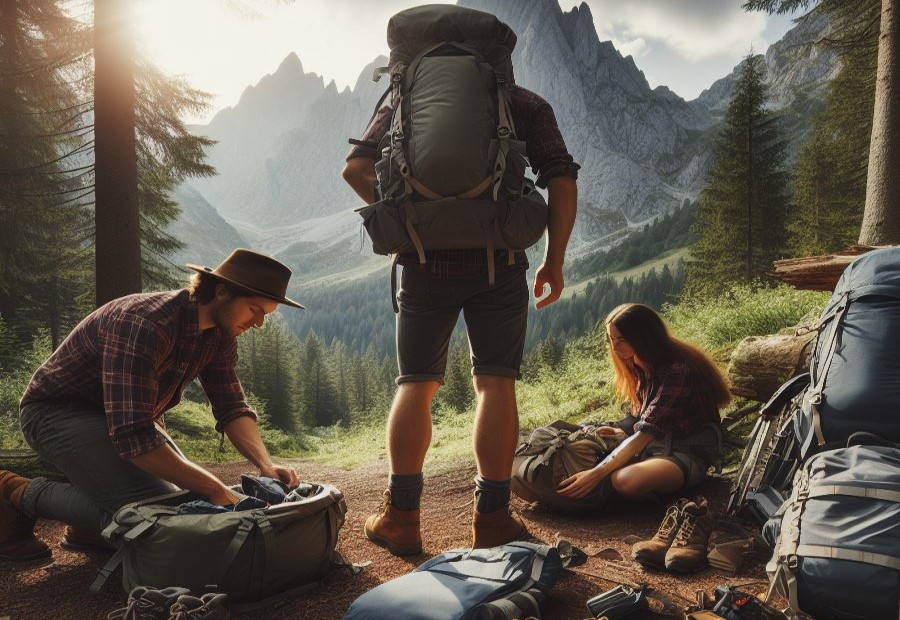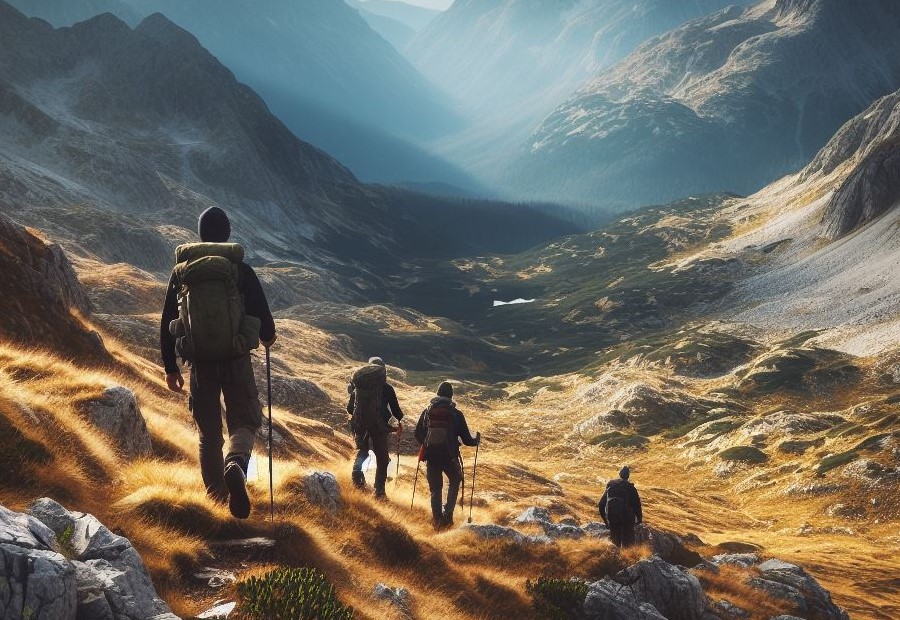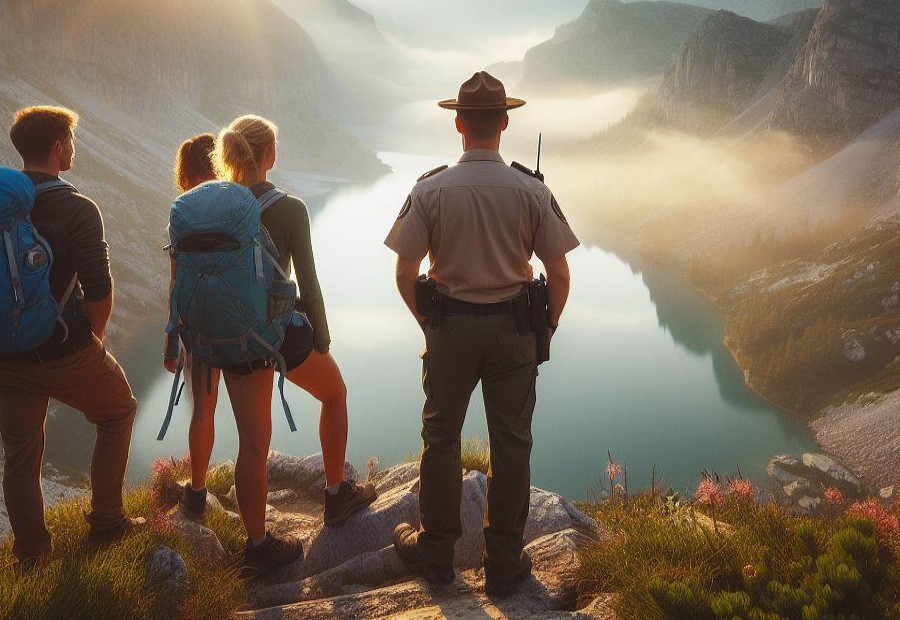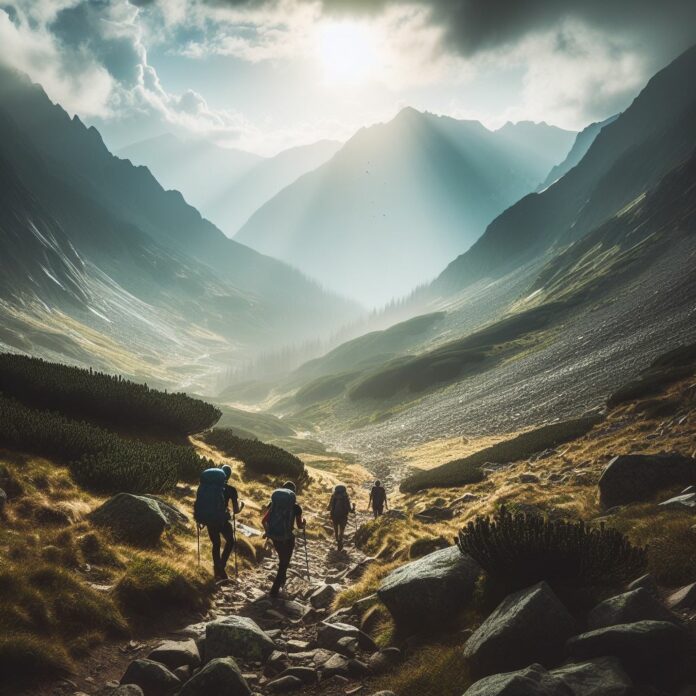Hiking in the mountains offers a thrilling adventure and an opportunity to connect with nature in a unique way. However, planning a successful hiking trip in the mountains requires careful preparation and consideration of various factors.
From choosing the right mountain to navigating the trails and ensuring safety measures, each step plays a crucial role in enhancing your hiking experience. Here is a comprehensive guide on how to plan a hiking trip in the mountains.
Firstly, it is essential to understand the fundamentals of hiking in the mountains. Research different mountains and their characteristics, such as elevation, terrain, and climate.
Next, proper preparation is key to a successful mountain hiking trip. Focus on improving your physical fitness level through regular exercise and training specific to hiking. Pack essential gear and equipment, including proper footwear, clothing suitable for the weather, navigation tools, and emergency supplies.
Plan your food and water provisions meticulously to ensure you have enough sustenance for the duration of your hike. Create a well-stocked first aid kit to address any minor injuries or discomfort along the way.
Navigating the mountain trails requires careful attention to details. Get familiar with the trail maps beforehand to understand the route and potential landmarks. Learn to interpret trail markings and signs, which provide guidance and information about the trail conditions.
Carry a compass and GPS device to prevent getting lost and ensure you stay on the right path. Above all, practice Leave No Trace principles to minimize your impact on the environment and preserve the natural beauty of the mountains.
Safety measures and emergency preparedness should never be overlooked. Inform others about your hiking trip, sharing your itinerary and expected return time. Check in with park rangers or local authorities for any specific rules or regulations.
Be knowledgeable about wildlife in the area and know how to react appropriately if you encounter any. Lastly, prepare for emergency situations by carrying essential tools like a flashlight, whistle, and emergency shelter.
By following these guidelines and putting in the necessary effort to plan ahead, you can ensure a safe and enjoyable mountain hiking trip. Remember to respect the mountains, be prepared, and embrace the beauty and adventure that awaits you on your journey.
Choosing the Right Mountain for Your Trip

When it comes to planning a hiking trip in the mountains, one crucial decision is choosing the right mountain. In this section, we’ll dive into the important factors to consider when making this choice. We’ll explore researching different mountains, evaluating difficulty levels, and checking safety and weather conditions.
By understanding these key aspects, you’ll be well-equipped to embark on an unforgettable mountain adventure. So, let’s start exploring the perfect mountain for your upcoming trip!
Researching Different Mountains
When planning a hiking trip, it is important to conduct thorough research on different mountains. By doing so, you can ensure that you choose a mountain that aligns with your fitness level and preferences, guaranteeing a safe and enjoyable adventure.
One factor to consider when researching mountains is their elevation. Higher mountains offer more challenging hikes and present breathtaking views, making them suitable for experienced hikers. On the other hand, lower mountains are more beginner-friendly, providing an ideal starting point for those new to hiking.
In addition to elevation, it is crucial to examine the terrain of the mountains. Some mountains feature rocky and rugged trails, adding an extra element of adventure. In contrast, other mountains offer more gentle slopes, providing a more relaxed hiking experience.
Moreover, it is essential to check the climate and weather conditions of the mountains you are interested in. Understanding the weather patterns will help you prepare the appropriate gear and clothing for your hike.
Another aspect to research is the availability of amenities and facilities at each mountain. Certain mountains may have campsites, restrooms, and visitor centers, ensuring a convenient and comfortable experience. However, it is worth noting that some mountains may have limited facilities, requiring hikers to be self-sufficient.
Lastly, reading reviews and experiences from other hikers who have visited the mountains you are considering can provide valuable insights. Their firsthand accounts can offer information about the difficulty level of the trails, current trail conditions, and overall experience.
Considering Difficulty Levels
When planning a hiking trip in the mountains, it is crucial to consider the difficulty levels. Here are some factors to keep in mind:
- Distance: Assess the length of the trail and determine if it aligns with your hiking abilities. A shorter trail may be easier for beginners.
- Elevation Gain: Take into account the total elevation gain of the trail. Higher elevation gain can make the hike more challenging.
- Terrain: Consider the terrain of the trail. Steep and rocky paths require more advanced hiking skills.
- Weather Conditions: Check the weather forecast before embarking on a hike. Rain, snow, or extreme temperatures can significantly increase the difficulty level.
- Hiking Experience: Evaluate your own hiking experience and fitness level. If you’re a beginner, it’s advisable to start with easier trails to build up your stamina and skills.
By considering these difficulty levels, you can select a mountain hike that matches your abilities and ensure a safe and enjoyable experience.
Checking Safety and Weather Conditions
When planning a hiking trip in the mountains, it is essential to prioritize safety and enjoyment by thoroughly checking safety and weather conditions.
Here are some important steps to follow:
- Begin by researching the specific mountain you intend to hike. Look for information on recent weather conditions, trail closures, and any potential hazards that you should be aware of.
- Next, check the weather forecast throughout the duration of your trip. Pay close attention to temperature changes, precipitation, and any severe weather warnings.
- Consider the time of year and season when planning your hike. Different weather conditions and safety risks may vary depending on the time you choose. For instance, winter hikes might require extra gear and precautions.
- Always make it a point to look for any trail advisories or warnings issued by local authorities or park rangers. They often provide crucial information about trail conditions, wildlife activity, and potential hazards.
- Furthermore, assess your own skills and experience honestly. Take into account your physical abilities and whether you are adequately prepared to face potentially challenging weather conditions or terrain.
By thoroughly checking safety and weather conditions, you will be well-prepared to overcome any challenges that may arise during your mountain hiking trip.
Remember to always prioritize safety and make informed decisions based on the most up-to-date information available. Happy hiking!
Preparing for a Hiking Trip in the Mountains

Get ready to conquer the mountain trails with our comprehensive guide on preparing for a mountain hiking trip. We’ll cover everything you need to know, from getting in top physical shape and packing the essential gear to planning for food, water, and even creating a first aid kit.
So lace up your boots, because we’re about to embark on an adventure like no other!
Physical Fitness and Training
In order to prepare for a hiking trip in the mountains, it is crucial to prioritize physical fitness and training. This will ensure that you are physically capable of enduring the challenges that come with hiking in rugged terrains.
- Engaging in regular cardiovascular exercises such as running or cycling can help improve your stamina and cardiovascular endurance for hiking.
- Strength training exercises, such as weightlifting or bodyweight exercises, play a vital role in developing muscular strength, especially in the legs, core, and upper body, which are crucial for hiking.
- Flexibility exercises, such as yoga or stretching routines, are essential for increasing your range of motion and preventing hiking-related injuries.
- It is important to gradually increase the intensity and duration of your training sessions to avoid overexertion and minimize the risk of injuries during hiking.
- Consider incorporating elevation training into your regimen, especially if you live in a flat area. This can be achieved through stair climbing or using a treadmill with an incline feature, helping to simulate mountainous conditions.
- It is advisable to seek the guidance of a qualified fitness professional or experienced hikers to develop a training plan tailored to your individual fitness level and hiking goals.
- Remember to listen to your body during training and adjust your workouts accordingly. Rest and recovery days are equally important as active training days to avoid overtraining.
By prioritizing physical fitness and training, you will enhance your overall performance, reduce the risk of injuries, and fully enjoy your mountain hiking trip.
Packing the Essential Gear and Equipment
When preparing for a mountain hiking trip, it is crucial to pack the essential gear and equipment to ensure a safe and enjoyable experience. Here is a list of the necessary items to include:
- Hiking boots: Choose comfortable, sturdy boots with good traction to protect your feet on uneven terrain.
- Backpack: Opt for a backpack with a capacity that can hold all your gear and distribute the weight evenly on your back.
- Layered clothing: Pack lightweight, moisture-wicking clothing that can be layered for warmth and protection from the elements.
- Waterproof jacket: Be prepared for unpredictable weather conditions by bringing a waterproof jacket or shell.
- Hiking pants: Wear durable, quick-drying pants that provide flexibility and protection against scratches and insect bites.
- Headlamp or flashlight: Ensure you have a reliable light source for navigating in the dark or during emergencies.
- Map and compass: Carry a physical map and compass to help navigate the trails and stay on the right path.
- First aid kit: Include essential items like bandages, antiseptic ointment, pain relievers, and any necessary personal medications.
- Water and snacks: Stay hydrated by carrying enough water and pack snacks that provide sustained energy.
- Sun protection: Bring a hat, sunglasses, and sunscreen to protect your skin from sunburn and UV rays.
- Emergency shelter: Consider carrying a lightweight, compact emergency shelter, such as a tent or bivy sack, in case you need overnight protection.
- Multi-tool or knife: Have a versatile tool that can be used for various tasks, such as cutting ropes or repairing gear.
By packing the essential gear and equipment, you’ll be well-prepared for your mountain hiking trip and ready to tackle any challenges that come your way.
Planning for Food and Water
When preparing for a mountain hiking trip, it is essential to plan for food and water. Planning for Food and Water is important to ensure that you have enough sustenance to stay energized and hydrated throughout your journey.
- Food requirements: It is important to pack enough food that will provide the necessary energy for the hike. Planning for Food and Water, aim for lightweight, nutrient-dense options such as energy bars, dried fruits, nuts, and jerky. Plan for at least 2,000-2,500 calories per day, depending on the intensity of the hike.
- Water needs: Hydration is crucial during a mountain hike. Planning for food and water, carry enough water to last throughout the journey, taking into account the duration and difficulty of the hike. A general rule of thumb is to pack at least one liter of water per hour of hiking. Consider using a hydration bladder or water bottles with built-in filters for convenience.
- Water sources: Research the availability of natural water sources along the trail, such as lakes, rivers, or streams. However, be cautious and treat any water before consuming, as it may contain harmful bacteria or parasites. Use water purification tablets, filters, or boiling methods to ensure safety.
- Meal planning: Plan your meals ahead of time, considering lightweight and easy-to-cook options like dehydrated meals or pasta. Planning for food and water, prioritize high-protein foods to aid in muscle recovery. Don’t forget to include snacks to keep you fueled throughout the hike.
- Special dietary needs: If you have any specific dietary requirements or restrictions, make sure to pack suitable alternatives or inform your hiking companions to accommodate your needs.
By carefully planning for food and water, you can ensure that you have the necessary sustenance to stay energized and hydrated throughout your mountain hiking trip.
Creating a First Aid Kit
When preparing for a mountain hiking trip, creating a first aid kit is an essential step. It is important to have the necessary supplies to handle any minor injuries or emergencies that may occur along the way.
- Choose a waterproof and durable container to store your first aid supplies.
- Include adhesive bandages of various sizes to cover cuts and blisters.
- Add sterile gauze pads and adhesive tape for dressing wounds.
- Include antiseptic wipes or solution to clean wounds and prevent infection.
- Pack a pair of disposable gloves to protect against contamination.
- Include a pair of tweezers to remove splinters or ticks.
- Add over-the-counter pain relievers such as ibuprofen or acetaminophen.
- Include antihistamines to manage allergic reactions.
- Pack a small pair of scissors for cutting clothing or bandages.
- Add a thermal blanket to provide warmth in case of hypothermia.
Remember to check the expiration dates of any medication or products in your first aid kit and replace them regularly. Understanding how to use each item in your kit is also important, so take the time to familiarize yourself with basic first aid procedures.
Being prepared with a well-stocked first aid kit can help ensure a safe and enjoyable mountain hiking trip.
Navigating the Mountain Trails

Embarking on a hiking trip in the mountains? Let’s talk about navigating the mountain trails, where we’ll explore important aspects like getting familiar with trail maps, understanding trail markings and signs, using a compass and GPS, and following Leave No Trace principles.
Get ready to conquer those mountains while staying on track and minimizing your impact on the wilderness.
Getting Familiar with the Trail Maps
When planning a hiking trip in the mountains, getting familiar with the trail maps is crucial for navigation and ensuring a safe trek. Here are some key considerations:
- Study the maps in detail: Carefully examine the trail maps to understand the different routes, elevations, and points of interest along the way.
- Identify trail junctions: Take note of where different trails intersect or diverge, as this will help you make informed decisions about your route.
- Look for landmarks: Locate prominent landmarks on the maps, such as lakes, rivers, or peaks, to use as reference points during your hike.
- Check mileages and distances: The maps should provide accurate distances between trailheads, junctions, and important landmarks. This information will assist you in planning your itinerary and estimating hiking times.
- Take note of difficulty ratings: Trail maps often indicate the difficulty level of each section or trail. Pay attention to these ratings and choose routes that align with your experience and fitness level.
- Consider alternative routes: Maps may highlight alternative paths or side trails that can be explored. Evaluate these options based on your preferences and time constraints.
It’s important to remember that while trail maps are incredibly helpful, they are not a substitute for proper navigation skills and outdoor experience. Always carry a compass, consult the map regularly during your hike, and stay aware of your surroundings.
Understanding Trail Markings and Signs
To navigate mountain trails safely and effectively, it is crucial to understand trail markings and signs. Look for trail blazes, which are marks on trees or rocks that indicate the path of the trail. These blazes can be painted in different colors to represent different trails or routes.
Pay attention to trail junctions where multiple paths meet. Trail signs are usually placed at these junctions to help hikers choose the correct route to their destination.
In areas where the trail may not be clearly defined, trail markers such as cairns or rock piles are often used. These markers serve the purpose of guiding hikers in the right direction.
To fully comprehend the layout of the trail system, trail maps are essential. Familiarize yourself with the symbols and legends used on the map to decipher important information.
It is important to note that trail markings and signs can vary depending on the region and trail management. Always consult reliable sources or park authorities for specific information about the trail you plan to hike.
Safety Measures and Emergency Preparedness

When it comes to planning a hiking trip in the mountains, safety should always be a top priority. In this section, we’ll dive into the crucial safety measures and emergency preparedness that every hiker should keep in mind.
From informing others about your trip to checking in with park rangers, knowing how to deal with wildlife encounters, and being prepared for any unexpected emergency situations, we’ve got you covered.
So, lace up your boots and get ready to explore the mountains with confidence and peace of mind!
Informing Others About Your Trip
When planning a hiking trip in the mountains, it is crucial to inform others about your trip for safety purposes. It is important to let someone know about your itinerary and expected return time as this can greatly assist authorities in locating you during emergencies. This is especially vital when hiking in remote or challenging terrains.
Before embarking on your adventure, make sure to share your hiking plans with a family member, friend, or park ranger. Be sure to provide them with specific details such as the mountain you will be hiking, the trail you plan to take, and the estimated duration of your trip. Additionally, remember to keep them updated if there are any changes to your itinerary.
Informing others about your trip can significantly reduce response time in the event of unexpected situations, such as getting lost or injured. It also adds an extra layer of safety and peace of mind knowing that someone is aware of your whereabouts.
Checking in with Park Rangers
When planning a hiking trip in the mountains, it is important to check in with park rangers for safety reasons and to gather valuable information. Here are some key reasons to do so:
- Park rules and regulations: By checking in with park rangers, you can receive up-to-date information about any rules or regulations that may be in place, such as trail closures or restrictions.
- Trail conditions: It is crucial to check in with park rangers as they are knowledgeable about the current trail conditions, including any hazards or obstacles that hikers may encounter along the way.
- Weather updates: Mountain weather can change rapidly, so checking in with park rangers is crucial to ensure you are prepared for any potential storms or extreme conditions.
- Wildlife sightings: By checking in with park rangers, you can stay informed about recent wildlife sightings in the area and take necessary precautions or witness the natural wonders.
- Emergency assistance: In case of an emergency, park rangers can provide vital assistance. They can guide you on emergency procedures and how to contact them if needed.
Remember, checking in with park rangers enhances your safety and helps you have a more enjoyable and informed mountain hiking experience.
Knowing How to Deal with Wildlife
Knowing how to deal with wildlife is crucial when hiking in the mountains to ensure both your safety and the preservation of the natural ecosystem. Here are some important tips:
- Stay calm and do not approach or feed any wild animals. Observe them from a safe distance.
- Research the wildlife that is commonly found in the area you will be hiking in to gain knowledge on their behavior and how to react if you encounter them.
- If you come across a bear, it is important to make yourself appear larger by raising your arms and speaking calmly. Back away slowly and avoid turning your back on the bear.
- When encountering a mountain lion, it is crucial to maintain eye contact, stand your ground, and slowly back away. It is advisable not to run, as this may trigger the lion’s instinct to chase.
- In order to prevent attracting wildlife to your campsite, ensure that food and other scented items are securely stored in bear-proof containers or hung from a tree branch at least 10 feet above the ground.
- To minimize your impact on the environment and avoid attracting wildlife with food scraps, it is important to dispose of trash properly and follow the leave no trace principles.
- If you notice any injured or distressed wildlife, it is crucial not to attempt to handle or help them yourself. Instead, it is recommended to contact local authorities or park rangers to report the situation.
Being Prepared for Emergency Situations
Being prepared for emergency situations is crucial when hiking in the mountains. Here are some important steps to take:
- Research the potential emergency situations specific to the area where you’ll be hiking. For example, if there is a risk of avalanches, educate yourself about avalanche safety and know how to recognize warning signs.
- Carry essential emergency supplies, such as a first aid kit, a whistle, a flashlight, and extra food and water. These items can be lifesaving in case of an emergency.
- Create a plan for communication with others in case of an emergency. Let someone know your hiking itinerary and when you expect to return. If you don’t show up as planned, they can alert authorities and initiate a search.
- Learn basic first aid skills to be able to provide immediate care for any injuries or illnesses that may occur during your hike. Taking a first aid course can significantly boost your preparedness.
- Be aware of the weather conditions and check the forecast before heading out. Sudden changes in weather can increase the risk of emergencies, such as hypothermia or flash floods.
Frequently Asked Questions
How do I break in my hiking shoes before a mountain hike?
To break in your hiking shoes before a mountain hike, wear them on shorter walks or hikes first. This will help your feet get accustomed to the shoes and prevent blisters during the longer hike.
What are the health benefits of hiking in the mountains?
Hiking in the mountains offers numerous health benefits, including weight management, stress reduction, and a low impact workout. It also promotes cardiovascular health, reduces the risk of heart disease, and improves overall well-being.
How can I ensure backcountry communication during a mountain hike?
To ensure backcountry communication during a mountain hike, consider investing in devices such as Garmin InReach or Spot X. These devices allow you to have reliable communication in remote areas where cell phone signal may not be available.
What should I pack for a mountain hike in terms of rain gear?
When packing for a mountain hike, it is important to include rain gear even if no rain is predicted. Pack a waterproof jacket and pants to stay dry during unexpected weather changes in the mountains.
What are the essential items to include in my packing list for a mountain hike?
The essential items to include in your packing list for a mountain hike are navigation tools, adequate water and food, clothing for different temperatures, safety items, a first-aid kit, a multi-purpose tool or knife, sun protection, a backpack, a trash bag, bug spray, and toiletries.
How do long distance hikes in the mountains contribute to our well-being?
Long distance hikes in the mountains contribute to our overall well-being by providing a sense of wonder and connection with nature. They offer an opportunity to disconnect from the stresses of daily life and immerse ourselves in the beauty of nature. Additionally, hiking in good company can enhance the experience and create lasting memories.

